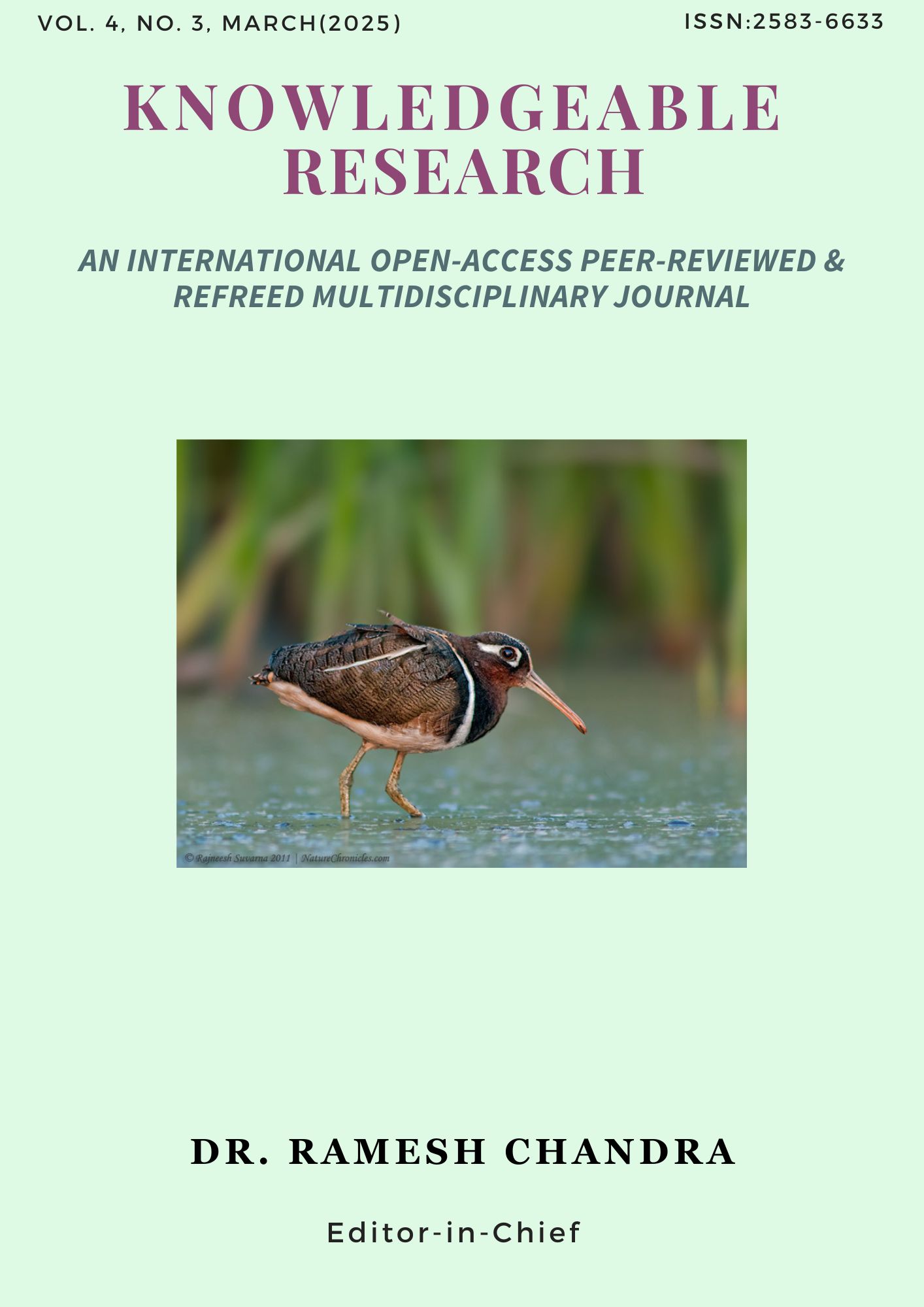Morphological Structure of Hindi
Main Article Content
Abstract
Hindi is one of the richest and most developed languages in the world due to its elaborate morphological structure. The complexities of word formation, grammatical inflections and linguistic change in Hindi language are extensively analysed in this research paper. The very complex morphological structure of Hindi is the result of cultural diversity, various linguistic influences and the historical development of the language. Linguists understand this diversity at many levels. First, word formation in Hindi is a diverse process in which new words are created by adding suffixes, prefixes and middle suffixes to root words. For example, many new words can be created from the basic verb "padh", such as "padhna", "padhai", "padhkar" etc. Second, grammatical inflections are so complex that they change not only number and gender, but also the subject, object, tense, mood and form of the word. Historical influences, local dialects and social contexts have contributed significantly to the complexity of linguistic change. The morphological structure of Hindi has been further enriched by the influence of Sanskrit, Persian, Arabic and English. The meaning and form of the same word can change under different circumstances, which shows the complexity and flexibility of the language.
Downloads
Article Details
Section

This work is licensed under a Creative Commons Attribution-NonCommercial 4.0 International License.

